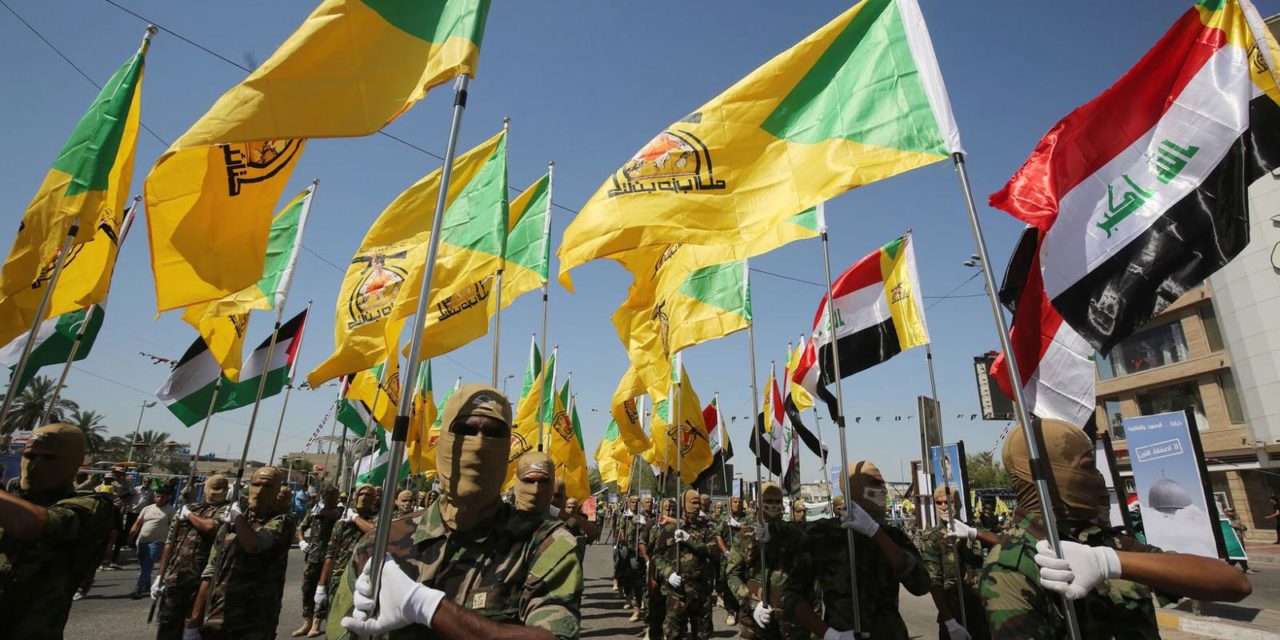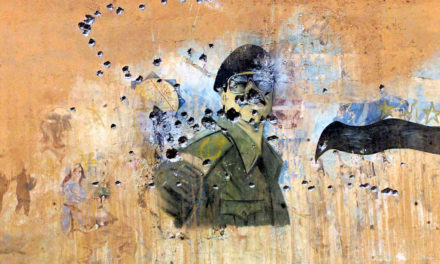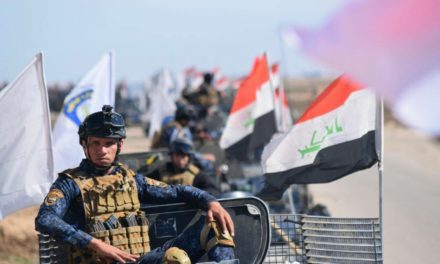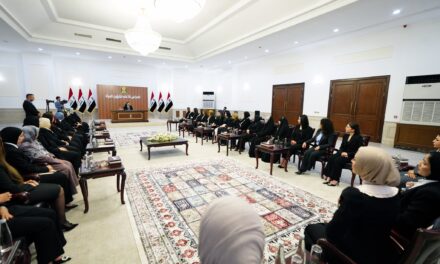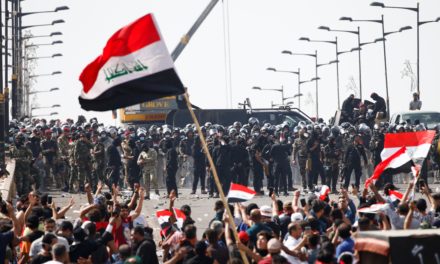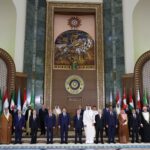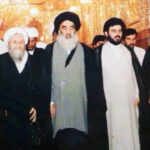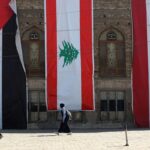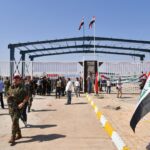(Source: Ahmad Al-Rubaye/AFP)
A bloody takeover of a third of the country by a terrorist organisation, a long and protracted war for liberation, inconceivable human and material damage, a near miss with economic collapse, political turmoil and a protest movement that has seen hundreds of civilians killed and thousands wounded. The recent situation in Iraq couldn’t possibly get any worse. Except, it just did.
Recent weeks have witnessed a series of minor rocket attacks against bases across Iraq that house American military personnel and contractors, including two rocket attacks against Baghdad International airport and one against Ayn Al-Asad airbase, a major base of operations for US troops, earlier this month.
On Friday evening, more than 30 Katyusha rockets struck the K1 military base outside the city of Kirkuk, killing an American civilian contractor and wounding four American soldiers and 2 Iraqi troops. This was a notable escalation, one that would inevitably draw a response.That response came Sunday evening, when American forces conducted “precision defensive strikes” against five Kata’ib Hezbollah (KH) facilities on both sides of the Iraqi-Syrian border at Al-Qa’im. It had been suspected for a while that Kata’ib Hezbollah, a major Iranian-linked paramilitary group, was involved in the rocket attacks against American interests.
The history between KH and American troops in Iraq stretches back to the post-2003 occupation, when KH was designated as one of several “Special Groups”; paramilitaries funded, trained and controlled – to a certain degree – by Iran. KH conducted numerous attacks against occupation forces, including IED, mortar, rocket and sniper operations.
The Pentagon has said that the airstrikes targeted three KH targets in Iraq and two in Syria that served as command and control locations and weapons storage facilities. According to Popular Mobilization Forces sources in western Anbar, the strikes have killed upwards of 25 KH members and wounded more than 50. False reports of a rocket attack on Taji military base, which also houses American and coalition troops, followed the KH strike but turned out to be misinformation.
This series of events marks the most significant escalation between American forces and Iranian-linked paramilitary groups in Iraq in recent times, one that could open the door to a much wider conflict across the country and possibly the region. Iraq is a target-rich environment for both sides, with more than 5,000 American troops and tens of thousands of Iranian-backed paramilitaries located in bases across the country.
This also serves as a watershed moment, the point at which the American side decided to disregard the views and instructions of the Iraqi government and flout Iraqi sovereignty by targeting Iraqis on Iraqi soil. This had been a step that the Americans had refrained from taking, even after numerous incidents that they had labelled as provocative.
The military action against KH follows a statement made on 13 December by U.S. Secretary of State Mike Pompeo after the Baghdad airport attacks, in which he stated, “We must also use this opportunity to remind Iran’s leaders that any attacks by them, or their proxies of any identity, that harm Americans, our allies, or our interests will be answered with a decisive U.S. response.”
In the aftermath of the American strikes, Iraqi Prime Minister Adil Abdul-Mahdi said, “We have already confirmed our rejection of any unilateral action by coalition forces or any other forces inside Iraq. We consider it a violation of Iraq’s sovereignty and a dangerous escalation that threatens the security of Iraq and the region,” according to a statement released on Iraqi state television.
Abdul-Mahdi now finds himself facing the nightmare possibility of Iranian-linked paramilitaries, whose political wings hold enormous sway over his government, going to war with American forces on Iraqi territory, which would compound a disastrous few months in which the deaths of hundreds of protestors have been laid at his feet, prompting him to hand in his resignation to parliament.
The coming days and weeks will answer a number of questions about how this perilous situation will play out, primarily how far are the paramilitaries willing to act upon their rhetoric which has endlessly stated that the American presence in Iraq is a continuation of the occupation, in addition to their readiness to take military action in order to force out the Americans, “once again”.
In the event of further escalations and more significant attacks against bases housing American personnel, another question that poses itself is: how far is the Trump administration willing to take their response? While American firepower in the region is a force to be reckoned with, the capabilities of groups such as KH and Asa’ib Ahl Al-Haq should not be taken lightly, nor should the amount of support that could be delivered by their Iranian backers in the strong likelihood that the K1 base attack and those before it were sanctioned by Tehran. The lives of thousands of American and coalition troops could be on the line if the U.S. decides to maintain this new line of action.
There is also the possibility that the Trump administration has just walked headfirst into a trap laid by the Iranian Revolutionary Guard Corps, or more specifically the head of the IRGC’s Quds Force, Qassim Soleimani. It is difficult to believe the IRGC would order repeated attacks against U.S. interests, from the American Embassy in Baghdad back in May to the rocket attacks on U.S. giant ExxonMobil near Basra in June or the bases this month, without anticipating an American response and planning for the steps that would follow.
In any eventuality, if these attacks were carried out upon instructions coming from Tehran, it is almost guaranteed to be a response to the protest movement that has engulfed Iraq since the beginning of October. Building upon last year’s Basra protests, the recent demonstrations have damaged the Iranian standing in Iraq considerably, with countless Iranian-linked political party headquarters, Iranian consulates and businesses and other interests attacked, and in many cases destroyed, by protestors demanding that Iran relinquish its hold on the political scene in Iraq.
Many pro-Iranian politicians and commentators have insinuated that the U.S. has played a significant role in fueling the protests in Iraq via the use of social media and other strategies to inflict damage upon the government of Abdul Mahdi, who many see as heavily leaning towards Tehran.
Following that train of thought, the rocket attacks on the military bases could be perceived as a “stand down” message to the Americans from the Iranian-backed faction in Iraq, hoping to alleviate the political pressures of the protest movement and the backlash to the violent crackdown against demonstrators. In that case, both sides’ actions would be as a result of calculated risk-taking not uncommon in Iraq and the wider region and tensions could soon dwindle.
However, the sheer force used by the Americans and the mounting death toll makes that scenario more difficult to foresee. Abu Mahdi Al-Muhandis, one of the most prominent commanders within the Popular Mobilization Forces and Iranian paramilitary camp, and for a long time suspected of being one of the leaders of KH, promised a “harsh response” to the American escalation.
The U.S. strikes against KH will also inevitably reignite the efforts by Iranian-backed political parties and those loyal to Muqtada Al-Sadr to force the full withdrawal of the 5,000 American troops still believed to be in Iraq. This time, the humiliation incurred by the strikes on Prime Minister Abdul Mahdi at such a weak point in his administration adds a very interesting component to how this renewed effort will play out.
The human cost aside, the material damage incurred by Kata’ib Hezbollah in the American strikes is insignificant. The plentiful resources available to KH and other Iran-backed groups will not be depleted by destroying remote outposts in the western Anbar desert and what was lost will soon be replenished by Tehran. The dead will be declared as martyrs and the facilities will be rebuilt. But a precedent that could unleash war at any time has now been set and a debilitated moment in Iraq’s history has just become much more fragile.


